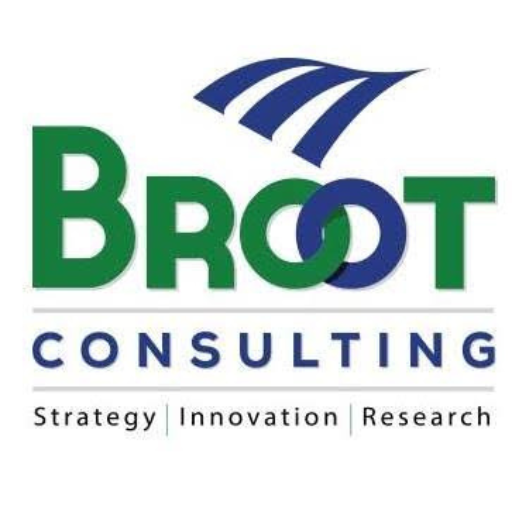“I was one of those people that never won anything. When I showed the certificate I received for my creative contributions to my family; my family celebrated my achievements. Seeing how my grandchildren admired me meant the world to me and gave me a boost of energy to continue to generate additional creative ideas.” – An Elop employee
Solving arrays of complex problems in businesses, society and personal lives is a significant leadership challenge. We are sometimes bogged down by these challenges because we are locked in a rigid culture that makes flexibility and a robust collaborative framework impossible or difficult to implement.
Joseph Golan a Division Leader at- Elbit Systems ELOP Ltd, Israel (A global company that manufactures a range of electro-optics systems/products for defence, space, and Homeland Security) was confronted with the challenge of changing the rigid culture at his division to a collaborative idea generating culture. As a success-oriented person, he recognised that his dream of a flexible and highly innovative division could only be achieved with the support of his team. The current innovation practices only encourage a handful of employees to submit ideas through a lengthy and complicated system. Besides, just ideas with clear economic benefits are welcomed. This practice discouraged most employees, and the majority concluded that submitting an idea to the company was not worth the effort. The average age of employees at the division is 48 years, with an average length of service of 20 years. Golan was faced with a classic case of possible ultra-conservatism.
To address the problem, Golan thought of a holistic process that would spur and guarantee a full life cycle of creativity. He envisioned a division where;
- Ideas never get lost
- Employees are motivated to submit ideas
- There is an atmosphere where employees could get help on idea development
- Everyone understands and adjudged the criteria used for idea selection to be fair
- There is a public recognition of ideas
- The most promising ideas are implemented.
The Spectacular Outcome of Golan’s Strategy:
Golan established an Innovation Club; membership was open to all employees, and criteria for admission were based on employees’ ability to take an active role in improving the company’s processes, services or products. Employees’ proposals were evaluated based on the level of creativity, entrepreneurship, originality and effort put into the idea.
Within seven years of establishing the Innovation club, 5140 ideas were received from 348 employees out of 430 employees in that division; this translated to 32 fresh ideas every week. An astonishing 93% of these ideas were approved for implementation, while 7% were rejected. 74% of the 93% accepted were with immediate implementation while the remaining 19% involved a long process of execution due to their long-term implications or misalignment with current organisational goals. By 2015 the ideas generated through this system had saved the company millions of dollars, improved efficiency, and dramatically changed the corporate culture.
Rigidity in Strategy, Structure and Culture
Rigidity manifest in the form of over-centralisation, highly hierarchical structure, over compartmentalisation, and lack of free movement of staff across different functions. The first approach to deal with rigidity is to overcome ego and inertia – either by way of past achievements, established processes, system, people or culture.
Clark Gilbert of The Academy of Management Journal, divided organisation inertia into two categories: Resource rigidity; failure to change resource investment patterns, and Routine rigidity; failure to change organisational processes. The culture inherited by Golan at Elop was ambiguous and complicated because of the adoption of out-of-tune management practices. He rose to the challenge and dismantled rigidity by developing a simple, sincere, informative and trustworthy framework that nurtures innovation and creativity. Any leader that continuously adopts a rigid style to the extent that he/she is unable or unwilling to sense new opportunities and reposition the organisation for long-term prosperity and survival will only lead the company to kick the bucket. It is important to recognise that regardless of the wises choice of culture, structure and strategy, all of them are dynamics therefore they must be continuously evaluated in the face of changing trends in the society.
Simplifying Rigidity for Collaborative Success.
A leader in an innovative company recognises the critical roles of the different types of employees in the organisation. Miron-Spektor, Erez and Naveh in a research work published in Harvard Business Review categorised employees into four groups: extremely creative, detail-oriented, and highly conformist and the more-general thinkers. Each of these categories of employees plays a critical role in either building, supporting or stifling innovation. While the detail-oriented people may appear to suppress creativity and innovation because of their eagerness for precision, they, however, could equally enhance creativity and ensure value for money. A collaborative culture will thrive when leader harnesses the skills and recognise role-benefits of different employees in the organisation’s benefit. Flexibility enables organisation to its strategic process, structure and culture, it is important that leaders therefore strive to:
- Make idea generation a business: every good idea adds value to the organisation either concerning improved profitability due to cost-saving measures or market and revenue growth. Design thinking gives an organisation the framework to develop ideas and solve complex problems.
- Remove the barriers: rigid strategy, structure, processes and culture are significant barriers to idea generation. The antidote is a simplified, easy to understand, flexible and stakeholder owned idea.
- Break out of the Comfort zone: fear of the unknown makes some leaders afraid of trying new things. In my article yesterday, I showed how Blockbuster missed the opportunity and how failure to embrace new thinking got them supplanted and led to its total collapse. Your employees must understand that there is no comfort zone for the organisation and when you begin to feel comfortable then it is time to self-disrupt. At Elop, employees enjoy more points for original ideas that pushed them out of their comfort zones, and that benefits multiple stakeholders in the organisation.
- Ensure Transparency: Golan developed an intranet platform on which employees would submit their ideas by filling out a simple form; the information on the platform was visible to everyone in the organisation. The transparency of the system enabled a fair assessment of ideas based on defined, known, and shared sets of parameters.
- Shift the burden of responsibility: Golan created a new system that held mid-level managers accountable. They received all forms from their direct reports and presented their employees’ ideas to the senior management and ensured that necessary funding was given to implement the selected ideas. The employees didn’t have to worry about selling their ideas, yet they got credit for their ideas that were accepted for implementation.
- Establish a fair reward system: unlike most innovative organisations where only winning ideas are rewarded, at Elop, a holistic approach was adopted, employees were recognised for their effort, not just the outcome. This practice enhanced organisational learning; every submitted idea qualified an employee to earn “creativity points.” Employees that present ideas receive a symbolic reward such as a certificate or a pen, with a personal note from the manager. Employees say that the feedback and recognition build their confidence and motivates them.
- Ensure Fairness and Openness: Employees at Elop adjudged the idea of the reward system as fair when their managers do three things: (1) gain accurate and complete information from the employee before they make a decision; (2) use clear and unbiased criteria for evaluating ideas; and (3) clearly explain their decisions about ideas. When the process seems fair, employees remain engaged and use the feedback they receive to improve their ideas.
- Establish the Innovation Club: establish an Innovation Club, make it open, make it real and make it impactful.
Conclusion
The present-day dynamic environment confers a superior advantage on any organisation that masters the art of flexibility and develop a collective courage that abandons the ineffective and unsustainable strategy, structure and culture. The winners in the current economic climes are skillful in stimulating their workforce to explore new and better ways of doing business
 Dr Olukunle A. Iyanda, Ph.D., FCA, MBA
Dr Olukunle A. Iyanda, Ph.D., FCA, MBA
Founder/Chief Executive Officer, BROOT Consulting
iyanda@brootc.com




